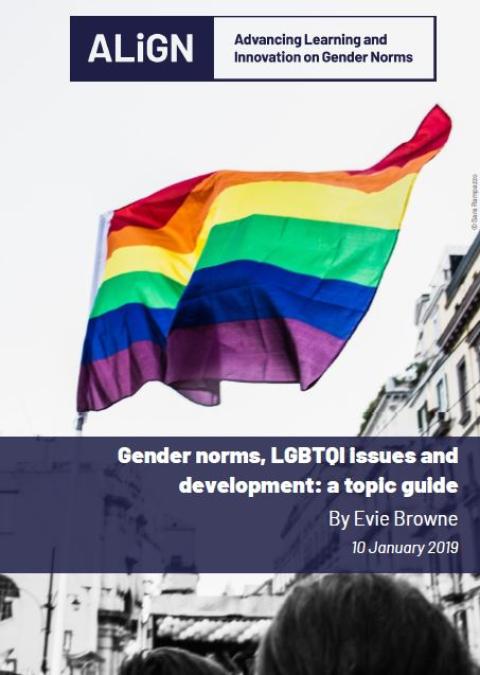- ALIGN guide
- 17 January 2019

Lesbian, gay, bisexual, transgender and intersex (LGBTI) rights have become an important topic of discussion in the development sector in recent years. Moving from the provision of HIV and AIDS care for the disproportionate number of LGBT people affected, through to same-sex marriage legalisation, the landscape has shifted to promote an LGBTI-inclusive approach in many areas. This is supported by a series of international and national human rights provisions affirming all people’s rights to nondiscrimination, freedom of expression and freedom from violence. In some contexts, these changes have been possible due to shifts in social norms towards greater tolerance and acceptance of LGBTQI people. Norm change has largely been the result of long-term and increasingly visible and vibrant activist engagement, drawing on strategies such as media coverage, peer interventions, ally-building and institutional training. This guide reviews some of the literature on the norm changes that are leading to greater acceptance of and less discrimination towards LGBTQI people, focusing on low income countries in the global South.
This topic guide is primarily intended for policy-makers and practitioners who may not be familiar with a queer theory approach to norms. It provides an overview of some important ideas and ways of thinking about how gendered social norms affect LGBTQI people in developing countries, moving the discussion beyond a rights-based approach to be more inclusive of all kinds of non-normative sexualities and genders. The guide aims to summarise the main theoretical points of a queer approach to gender norms, to identify the key issues and challenges affecting LGBTQI people, and to provide some examples of where norm change has happened.
- Tags:
- Intersectionality, LGBTQI+, Theory
- Countries / Regions:
- Global